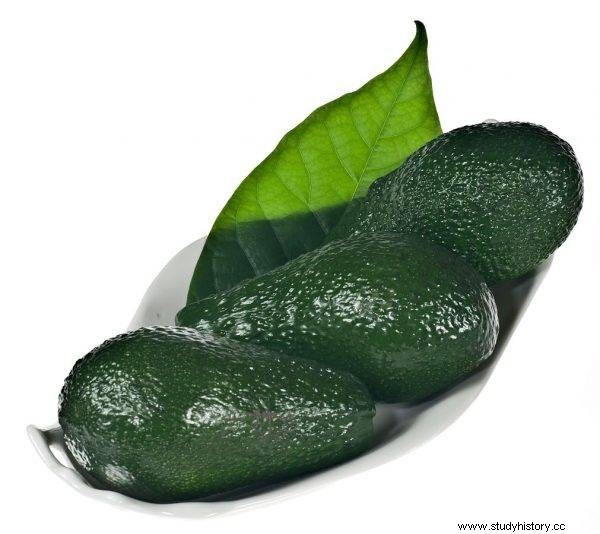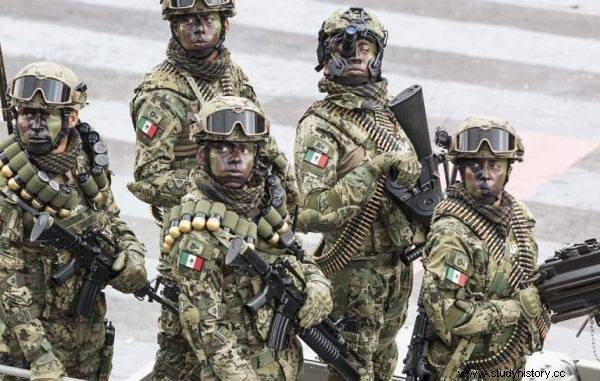Its name derives from the Aztec word āhuacatl meaning ... kernels. Today, avocados are often served on our tables. Few people know how bloody history is.
The world is crazy about avocados. This little green fruit currently has countless fans around the globe. #avocado on Instagram has already reached over 10 million photos. We boast about young seedlings, we show our superfit dishes, we compare its value with other products. But it doesn't stop there!
Memes depicting "everyday dilemmas in avocado life" are popular. We boast about jewelry of this shape, clothes with "avocado print". We dress our children and animals in cute clothes with a characteristic stone on their bellies. About 5 billion avocados are eaten annually worldwide, of which roughly 1/3 (approximately 1,600,000 tonnes) comes from Mexico. 6% of Mexican production is eaten by Americans during one night only - Super Bowl games .
"Green DNA" or how did it all start?
Avocados were part of the diet of the South American people as early as 10,000 B.C. Archaeological finds from the area of Huaca Prieta (Peru's coast) confirm its presence in these areas. They also suggest that it has already been transported from place to place. The first European to taste an avocado was Martín Fernández de Enciso. It was he who described the fruit in 1519 in his book Summa de Geografía. He compared them to an orange which turns yellow when fully ripe. He described the taste as buttery and wonderful. Historian Gonzalo Fernandez de Oviedo stated 7 years later that avocado is excellent with cheese.

Avocado fruit
The avocado became known in more and more regions of the Americas and was eventually shipped to Jamaica. After the British took over the island, it caught the attention of other eyes. In the nineteenth century, its cultivation also spread. At that time, avocados were planted, among others on the slopes of the California hills.
Green gold is taking over the world
Mexico is the cradle of the avocado. Although it is currently grown in many countries, it is here that the most of it is produced. Interestingly, until recently, this fruit was not well known in the world. In the 1970s, the hass variety began to gain popularity. It is very tasty and - most importantly - delivered to the customer in an appropriate size for consumption "at once".
California producers sponsored research and advertising prepared by the California Avocado Commission . This institution was vigorously promoting this fruit, rich in fats and vitamins. Although these campaigns ran in the 'being fit' '70s and' 80s, the demand for avocados was significantly increased.

US advertising in the 1980s provided the consumer with the salutary properties of avocados. Photo still from the Netflix series "Rotten:Avocado War"
The ads featured tempting, athletic models eating avocados for health. Airlines boasted that avocados were served on their decks, and that passengers could eat deliciously and not gain weight. US production doubled during this time.
Demand grew even more with the North American Free Trade Agreement, NAFTA, signed on December 17, 1992, and entered into force on January 1, 1994. This agreement opened the trade boundaries of the United States, Canada and Mexico. Subsequent regions of Mexico, after adjusting to production requirements, began to expand into the US market. As a result, sales of avocados doubled over the next 10 years.
Bloody Avocado
However, the increase in production, new jobs and an overall improvement in life are only part of the Mexican reality. Drug cartels got interested in this lucrative business very quickly whose existing businesses were beginning to decline. Open borders promised criminal groups an easy income.
The first cartel to start a new business was one of the oldest - GULF. The worst times for growers came with the separation of the Los Zetas cartel. It consisted of soldiers previously recruited by other cartels to work . Initially, the military recruited had no option, as they were presented with proposals they could not refuse. With time, they grew stronger and, knowing their abilities, decided to disconnect and act on their own.

Few people are aware of what "business" looks like in the avocado market
The times of fear and blood began for avocado growers . The cartel introduced new methods which made them more profitable. The growers and their family members were kidnapped for ransom. The prisoners were held in terrible conditions. Although it happened that they returned home, it was not infrequently with enormous damage to their health. Many of the small-scale growers had to borrow huge sums, sell some of their land and trees to pay the cartels exorbitant amounts for their lives and the lives of their loved ones. They had no choice - reporting to the police would only make matters worse. The authorities at that time were almost completely corrupt. The fight against cartels was started in 2006 by President Calderón, in order to completely end the problem. Mighty military forces caught and killed many drug bosses, but the effect was only to break the existing groups into smaller ones. With their disintegration, the number of criminal groups surviving racketeering and kidnapping has increased.
Resistance
The most famous avocado-producing region in Mexico is the state of Michoacán. He was the first to achieve the sanitary conditions allowing the export of avocados to the USA. It is here that the greatest development can be observed. In Tancítaro, every fifth job is related to the production of avocados. However, this region has also become the scene of bloody events - this is where the cartels hit the hardest .
After an unsuccessful government action, the people of Tancítaro decided to take matters into their own hands. They founded the organization La Familia Michoacana, which was to protect the interests of the inhabitants. But from saviors they quickly became torturers themselves . The organization broke up in 2010. In its place, a cartel of Knights Templar was created. Extortion based on racketeering the avocado trade became the second source of income for drug cartels during this period.

The government fought against drug cartels, but it broke them up into smaller units
In response to the oppression, the Auto Defensa - Samoobrona group was formed, consisting of armed townspeople who had had enough of succumbing to violence . Tancítaro became a fortress. Auto Defensa has been assimilated with the government forces over time, although the government no longer has real power here.
To the last drop
Chile obtained permission to export avocados to the United States 10 years before Mexico. And although he is not bothered by constant fights with cartels and racketeering, Chileans are struggling with an equally serious threat. Chilean economists in the 1970s studied the laws of the US market and very quickly implemented the conclusions drawn from these studies. Water was privatized in 1981 under Augusto Pinochet's rule . The result is an increase in avocado production by large growers. Exports are also growing. And the Chileans are facing enormous costs. Along with the privatization, access to water for residents was limited. In avocado-producing regions (e.g. in the province of Petorka), people receive so little water that they are unable to maintain gardens, which are often their only livelihoods. Little growers are going bankrupt and being taken over by the avocado powers. The rivers in the region are dry and the ecosystem is being destroyed. People are often unable to purchase access to sufficient drinking water .
Given the circumstances of the production and export of avocados, it is our responsibility to raise consumer awareness. We cannot afford an environmentally destructive economy. We can already see that climate change is also having an impact on avocado production. In California, farmers have to abandon some of their crops. Newly planted trees bear fruit only after 5–13 years. Growers will not be able to rebuild the currently lost resources in decades. And that's as long as the climate doesn't get drier.

Augusto Pinochet
There is a difficult task facing governments and global organizations. A good option is to introduce quality certificates which will certify that the product in the store does not come from exploitation and violence.
The next time you reach for an avocado, let's think about where it comes from. Let's keep up to date with information on the progress of the protection of human rights and the environment. And remember to buy these fruits wisely, because behind every piece that you throw away senselessly into the trash, there is often the blood or even life of the person who grew this particular avocado for us.
Bibliography:
- Rotten:Avocado War , Netflix document.
- Super Food:Avocado , Bloomsbury Publishing 2017.
- Should you stop eating 'blood avocados'? , Support The Guardian, accessed October 29, 2019.
- Cat Rainsford, 4 of Mexico's cartels are fighting for control of the avocado busines s, Buisness Insider, accessed October 29, 2019.
- Guy Kelly, A cultural history of the avocado. A toast to the berry - yes, it’s a berry - on National Avocado Day , BBC, accessed October 29, 2019.
- Tom D. Dillehay, Steve Goodbred, Mario Pino et al., Simple technologies and diverse food strategies of the Late Pleistocene and Early Holocene at Huaca Prieta, Coastal Peru , Science Advances, accessed October 29, 2019.
